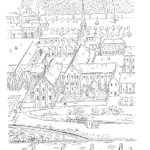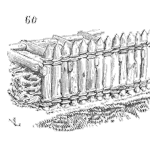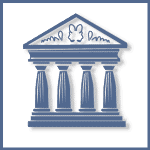
Is DFX serial or parallel?
Abstract
Adam and Fred discuss the application of DFx methodology in the product development process.
ᐅ Play Episode
Your Reliability Engineering Professional Development Site
by Adam Bahret Leave a Comment

Adam and Fred discuss the application of DFx methodology in the product development process.
ᐅ Play Episode
by Carl S. Carlson Leave a Comment

Carl and Fred discuss the early design process and the reliability approach that can best integrate reliability objectives with the design team.
ᐅ Play Episode
by Carl S. Carlson Leave a Comment

Carl and Fred discuss to discuss the most common mistakes made by FMEA practitioners and how they can be avoided.
ᐅ Play Episode

Carl and Fred discuss some of the most common mistakes made by FMEA practitioners and how they can be avoided. In this episode, 4 of the most common mistakes are discussed.
ᐅ Play Episode
by Adam Bahret Leave a Comment

Adam and Fred discuss the importance of teaching, coaching and encouraging your engineering peers.
ᐅ Play Episode
by Tim Rodgers Leave a Comment

Tim Rodgers interviews Perry Parendo concerning Perry’s work with clients working to bring new products to market.
ᐅ Play Episode

Adam and Fred discuss how to help your team want to learn about reliability.
ᐅ Play Episode
by Adam Bahret Leave a Comment

Adam and Fred discuss HAST, HASS, and HASA as products transition from development to manufacturing.
ᐅ Play Episode
by Tim Rodgers Leave a Comment

Fred Schenkelberg interview Jon about his career and consulting.
ᐅ Play Episode

Kirk and Fred discuss when and how best to justify the costs to move from using an external lab to perform HALT testing to building an internal HALT lab.
There are many benefits of having a HALT chamber or environmental testing capability, but many of those reasons are not easily quantifiable in dollars.
ᐅ Play Episode

Kirk and Fred discuss what should be considered when choosing to use an external lab to perform HALT evaluations. Distance, costs, measurement instrumentation, lab experience and knowledge of HALT by lab personnel are all part of the considerations deciding what HALT lab to use.
ᐅ Play Episode
by Fred Schenkelberg 1 Comment

The investment in creating a reliable product pays dividends during the operation of the equipment or system.
The ability to estimate future savings or costs based on reliability engineering is key. Minimizing lifecycle cost occurs with reliability.
by Adam Bahret Leave a Comment

Adam and Fred as they discuss how the approach to reliability tools and practices change within a product development culture.
ᐅ Play Episode
by Tim Rodgers Leave a Comment

Fred Schenkelberg interviews Jay about his past work and current ownership and general manager role at Ops A La Carte.
ᐅ Play Episode
by Adam Bahret Leave a Comment

Adam and Fred discuss how training in reliability with advance the team’s ability to participate in a reliability program.
ᐅ Play Episode